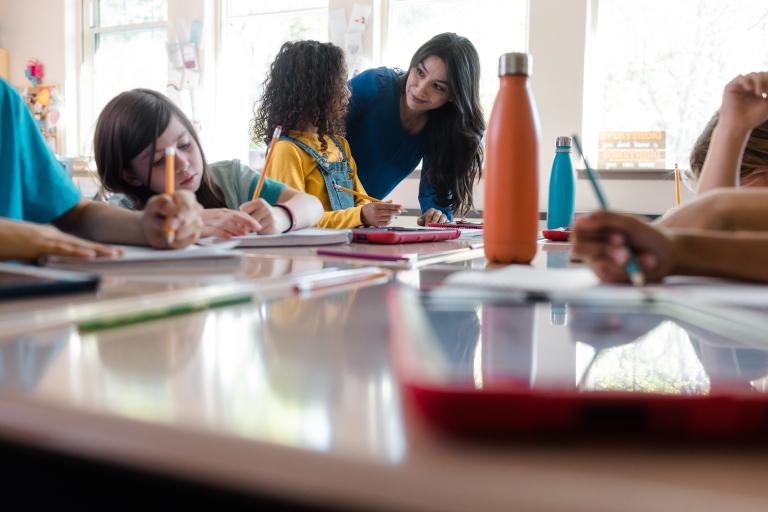
Each school year brings on new students, families, and experiences. What remains the same is the love for educating and crafting memorable learning experiences.
Classroom management brings order to the academic environment supporting those learning milestones. With a well-managed classroom, you can help students adapt to a new classroom routine, setting them up for success. Get back into the classroom feeling prepared with these five strategies for classroom management.
1. Develop Meaningful Relationships with Students and Families
Before diving into instruction, get to know your students. Gauging their interests, goals, and prior knowledge can influence future teaching and learning opportunities. A healthy and respectful relationship with students increases their engagement and performance in class.
Your student's family is an integral part of them. Developing relationships with the families gives you a deeper understanding of the student and strengthens their support system.
See how you can engage families and guardians in Canvas LMS.
2. Set Clear Classroom and Learning Expectations
Starting a new school year can overwhelm students as they readjust from their summer breaks. Setting class expectations and identifying rules prepares students for what's to come throughout the school year. One helpful trick is to involve students in establishing guidelines, giving them a sense of ownership in their classroom. For example, teachers can gather student opinions through a class discussion or poll.
Keep expectations clear, positive, and actionable, ensuring that every student understands what's expected of them.
3. Create a Collaborative Learning Environment
Bring the classroom together with engaging activities that drive participation. Students benefit from positive interactions and collaboration with peers. Turn class activities and projects into immersive paired learning experiences, helping students build relationships.
Rotate groupings and pairings to encourage the students to work with everyone. This fosters an inclusive and collaborative learning environment and builds students’ capacity to collaborate with one another.
4. Maintain Consistent and Organized Instructional Practices
A learning environment is not expected to be rigid or overly structured. However, consistent and organized learning practice increases teaching efficiency. Both teachers and students can get the most out of the academic day when a healthy class structure is implemented.
Try class warm-ups and exit tickets to engage students and facilitate consistent daily practice. To further nurture class structure, maintain and organize your classes with routine calendar maintenance and do frequent check-ins on individual and class performance.
5. Accommodate All Learners and Their Needs
With today’s diverse academic landscape, teachers are sure to foster inclusive learning environments. Consider the student's backgrounds, prior learning experiences, and needs when planning instruction. This approach helps you tailor content for your students, meeting them where they are.
Learn more about the Universal Design for Learning to drive equitable learning experiences.
Start the Year Strong with Canvas LMS
Learn how to manage your courses and set up communication and progress-tracking features with Canvas Training Services.
For more, join groups and collaborate with other teachers in the Instructure Community.
Related Content
 canvas-offline-blog-thumbnail-2024.jpg
canvas-offline-blog-thumbnail-2024.jpgBlog Articles
 googlexinst.png
googlexinst.pngBlog Articles
 facommons.png
facommons.pngBlog Articles